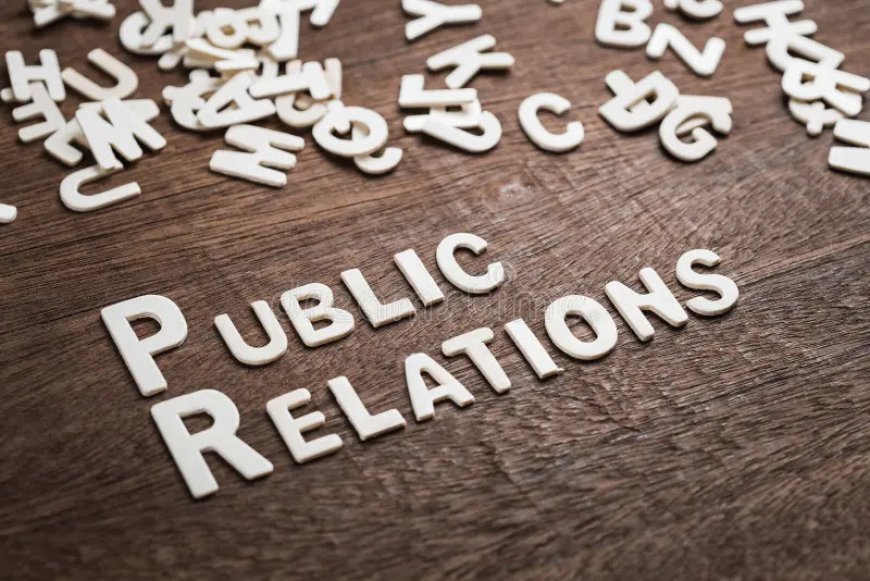How PR Agencies Work in the USA
PR agencies are professional service firms specializing in managing communication between their clients and the public.

Celebrity PR Services in the United States play a pivotal role in shaping public perception, managing communication strategies, and building brand reputations for businesses, organizations, and individuals. These agencies serve as strategic partners, helping clients navigate the complex media landscape, engage with audiences, and achieve their communication goals. This article provides a comprehensive overview of how PR agencies operate in the USA, exploring their structure, services, processes, and the broader industry context.
The Role of PR Agencies
PR agencies are professional service firms specializing in managing communication between their clients and the public. Their primary objective is to create, maintain, or enhance a clients public image through strategic messaging and media engagement. Unlike advertising, which focuses on paid promotions, PR emphasizes earned mediacoverage gained through media relationships, press releases, events, and other non-paid channels.
In the USA, PR agencies work with a diverse range of clients, including corporations, non-profits, government entities, startups, and high-profile individuals. They tailor their strategies to align with the clients goals, whether its increasing brand awareness, managing a crisis, launching a product, or influencing public opinion.
Structure of a PR Agency
PR agencies in the USA vary in size, from boutique firms with a handful of employees to large multinational agencies with hundreds of staff across multiple offices. Despite their differences, most agencies share a similar organizational structure designed to deliver specialized services efficiently.
Leadership and Account Management
At the top, PR agencies are led by senior executives such as CEOs, presidents, or managing directors who oversee strategy, client relationships, and business development. Account managers or account executives serve as the primary point of contact for clients, coordinating campaigns and ensuring deliverables meet expectations. These professionals act as liaisons, translating client needs into actionable strategies.
Creative and Content Teams
Creative teams, including writers, graphic designers, and digital content specialists, develop compelling narratives, press releases, social media content, and visual assets. These teams ensure that messaging is consistent, engaging, and aligned with the clients brand identity.
Media Relations Specialists
Media relations teams are responsible for building and maintaining relationships with journalists, editors, bloggers, and influencers. They pitch stories, arrange interviews, and secure media coverage in print, broadcast, and online outlets. These specialists stay attuned to media trends and leverage their networks to amplify client messages.
Digital and Social Media Experts
With the rise of digital platforms, many PR agencies employ specialists in social media, search engine optimization (SEO), and analytics. These professionals manage online campaigns, monitor social media engagement, and analyze data to measure the impact of PR efforts.
Research and Analytics
Research teams conduct market analysis, audience segmentation, and competitive benchmarking to inform strategies. Analytics experts track campaign performance, using tools like Google Analytics, social media dashboards, and media monitoring software to assess reach, engagement, and sentiment.
Core Services Offered by PR Agencies
PR agencies in the USA offer a wide range of services tailored to client needs. These services can be broadly categorized into strategic communication, media relations, digital PR, crisis management, and event management.
Strategic Communication
Strategic communication involves crafting a cohesive narrative that aligns with the clients goals. Agencies work with clients to define key messages, identify target audiences, and develop communication plans. This may include creating brand positioning statements, mission statements, or thought leadership content to establish the client as an industry authority.
Media Relations
Media relations is at the heart of PR. Agencies pitch stories to journalists, secure media placements, and coordinate interviews or press conferences. They also produce press kits, which include press releases, fact sheets, and backgrounders, to provide journalists with comprehensive information about the client.
Digital PR and Social Media
Digital PR encompasses online reputation management, influencer partnerships, and content creation for digital platforms. Agencies manage social media accounts, develop content calendars, and engage with audiences on platforms like X, Instagram, LinkedIn, and TikTok. They also optimize content for search engines to increase visibility.
Crisis Management
Crisis management is a critical service, especially for clients facing public scrutiny or unexpected challenges. PR agencies develop crisis communication plans, prepare spokespeople, and craft statements to mitigate reputational damage. They monitor media and public sentiment to respond swiftly and effectively.
Event Management
Many PR agencies organize events such as product launches, press conferences, or charity galas to generate buzz and media coverage. They handle logistics, secure media attendance, and create memorable experiences that align with the clients brand.
The PR Process: From Strategy to Execution
The work of a PR agency follows a structured process, typically broken down into several key stages: discovery, strategy development, execution, and measurement.
Discovery and Research
The process begins with a discovery phase, where the agency gathers information about the clients business, goals, target audience, and competitors. This may involve client interviews, market research, and media audits to understand the current perception of the brand. Agencies also analyze industry trends and media landscapes to identify opportunities for coverage.
Strategy Development
Based on the discovery phase, the agency develops a tailored PR strategy. This includes defining objectives (e.g., increasing brand awareness by 20% or securing 10 media placements), identifying key messages, and selecting appropriate channels (e.g., traditional media, social media, or influencer partnerships). The strategy outlines timelines, deliverables, and key performance indicators (KPIs) to measure success.
Execution
Execution involves implementing the strategy through various tactics. For example, the agency might issue a press release, pitch stories to journalists, launch a social media campaign, or organize an event. Media relations teams work to secure coverage, while content creators produce blogs, videos, or infographics to support the campaign.
Measurement and Reporting
After the campaign is executed, agencies measure its impact using metrics like media impressions, website traffic, social media engagement, or sentiment analysis. They provide clients with detailed reports that evaluate the campaigns success against the agreed-upon KPIs. This data informs future strategies and helps refine ongoing efforts.
The PR Industry in the USA
The PR industry in the USA is dynamic and highly competitive, driven by evolving media trends, technological advancements, and changing consumer behaviors. According to industry estimates, the U.S. PR market is valued at over $14 billion annually, with thousands of agencies operating across the country.
Key Trends Shaping the Industry
-
Digital Transformation: The shift to digital media has transformed PR, with agencies increasingly focusing on social media, influencer marketing, and content-driven campaigns. Platforms like X have become critical for real-time engagement and amplifying messages.
-
Data-Driven PR: Agencies rely on data analytics to track campaign performance, measure ROI, and optimize strategies. Tools like Cision, Meltwater, and Hootsuite provide insights into media coverage and audience behavior.
-
Integrated Marketing: Many PR agencies collaborate with advertising, marketing, and digital agencies to deliver integrated campaigns. This holistic approach ensures consistency across all communication channels.
-
Diversity and Inclusion: Agencies are prioritizing diversity in their campaigns, ensuring that messaging resonates with diverse audiences and reflects inclusive values.
Challenges in the PR Industry
PR agencies face several challenges, including staying relevant in a crowded media landscape, managing client expectations, and adapting to rapid technological changes. The 24/7 news cycle and the rise of misinformation require agencies to be agile and proactive in their approach.
Regulatory and Ethical Considerations
PR agencies in the USA operate under guidelines set by organizations like the Public Relations Society of America (PRSA), which emphasizes ethical communication. Agencies must ensure transparency, avoid misleading claims, and comply with regulations like the Federal Trade Commission (FTC) guidelines for influencer marketing.
How PR Agencies Engage with Clients
Client relationships are central to a PR agencys success. Agencies typically work with clients on a retainer basis, project basis, or hourly rate, depending on the scope of work. The engagement process involves several steps:
Initial Consultation
The agency meets with the client to understand their needs, budget, and timeline. This consultation helps determine whether the agencys expertise aligns with the clients goals.
Proposal and Contract
The agency submits a proposal outlining the scope of work, deliverables, timelines, and costs. Once approved, a contract formalizes the partnership, specifying terms and expectations.
Ongoing Collaboration
Throughout the engagement, the agency maintains regular communication with the client through meetings, progress reports, and updates. Account managers ensure that the clients feedback is incorporated into the campaign.
Long-Term Partnership
Successful PR campaigns often lead to long-term relationships, with agencies becoming trusted advisors to their clients. They may expand their services to include additional areas like content marketing or thought leadership.
The Role of Technology in PR
Technology plays a significant role in modern PR agencies. Media monitoring tools track coverage in real time, while customer relationship management (CRM) systems streamline client interactions. Artificial intelligence (AI) is increasingly used for sentiment analysis, audience targeting, and content personalization. For example, AI-powered tools can analyze social media conversations to identify trends or predict audience reactions.
Cloud-based collaboration platforms enable teams to work seamlessly across locations, while project management tools like Asana or Trello keep campaigns on track. Agencies also leverage video conferencing and virtual event platforms to engage with clients and audiences remotely.
Skills and Expertise Required in PR Agencies
Working in a PR agency requires a diverse skill set, including:
-
Communication Skills: Crafting compelling messages and pitching stories effectively.
-
Media Savvy: Understanding media dynamics and building relationships with journalists.
-
Creativity: Developing innovative campaigns that stand out in a crowded market.
-
Analytical Thinking: Interpreting data to measure campaign success and optimize strategies.
-
Adaptability: Responding quickly to changing media trends or client needs.
Many PR professionals hold degrees in communications, journalism, marketing, or related fields, and certifications like the PRSAs Accreditation in Public Relations (APR) can enhance credibility.
The Future of PR Agencies in the USA
The Influncer PR industry in the USA is poised for continued growth, driven by the increasing importance of digital communication and reputation management. Agencies will need to adapt to emerging technologies like virtual reality, augmented reality, and advanced AI tools. Additionally, the focus on authenticity and transparency will shape how agencies craft narratives and engage with audiences.
As businesses and organizations recognize the value of strategic communication, PR agencies will remain essential partners in navigating the complexities of public perception. By combining creativity, data-driven insights, and media expertise, these agencies will continue to shape the way brands connect with the world.





































